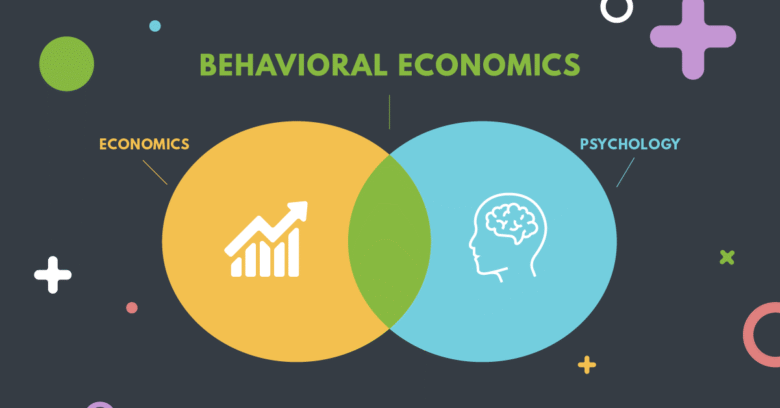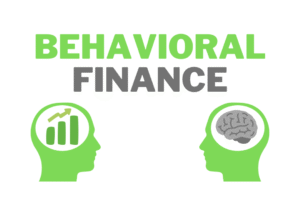Behavioral economics plays a crucial role in people’s everyday choices, even if they are unaware of it. This field, which combines psychology and economics, attempts to explain why consumers often make seemingly illogical or emotionally driven decisions rather than rational ones. Behavioral economics subtly influences people when they choose a brand based on familiarity, spend more on a limited-time offer, or choose not to switch to a better service because they find it unaffordable. Understanding these hidden factors can help everyone become a more conscious consumer and make better-informed financial decisions. This idea is especially important in an era of online advertising, digital payments, and marketing messages that constantly influence people’s perceptions. By recognizing these hidden forces, people can make more confident choices in everyday life and avoid developing costly consumption habits.
The Influence of Emotions on Consumer Decisions
One of the most powerful ways behavioral economics influences daily behavior is through emotions. While traditional economics assumes that people’s behavior is always logical, this is often not the case. Emotions like excitement, fear, anxiety, and desire can instantly change people’s decisions. When people make impulsive purchases, it’s often the emotional part of the brain that dominates. For companies, this emotional influence becomes a marketing tool, as advertising focuses on evoking specific emotions to motivate consumers to buy. Whether it’s heartwarming ads that inspire confidence or eye-catching ads that evoke excitement, emotion has a major influence on economic behavior. This emotional influence also influences how consumers remember brands, compare prices, and develop long-term purchasing behavior. Understanding how emotions work can help people pause and better manage their consumption choices.
The Role of Social Influence on Consumer Choices
Another important aspect of behavioral economics is the influence of social behavior. People often observe the behavior of others before making a decision. When many people choose a particular product, restaurant, or service, others are more likely to follow suit. This process is called social proof and is ubiquitous, evident in everything from online reviews to trending items on e-commerce platforms. Even simple phrases like “most popular choice” can significantly boost sales because people instinctively rely on group behavior. To fit in, consumers might buy products they don’t need or choose a more expensive product simply because it seems more popular. Social influence also influences how people save, invest, and consume. Understanding this effect helps consumers avoid blindly following trends and instead make decisions based on their individual needs and financial goals.
How Default Options Automatically Drive Consumer Behavior
One of the most subtle yet powerful concepts in behavioral economics is default options. People are naturally inclined to choose the easiest option and stick to preset options. That’s why many people use the same phone plan, bank, or insurance company for years, even when better options are available. Companies use default settings because they know consumers generally won’t change them. For example, auto-renewal plans exploit this behavior. People continue paying simply because canceling or changing a plan requires extra action. A look at online forms shows how preselected options can influence consumers’ decisions without them even realizing it. Recognizing the impact of standard options can encourage people to be more proactive in their choices, compare different options, and avoid unnecessary spending.
The Impact of Framing on Daily Consumer Decisions
The framing effect is another behavioral concept that influences how consumers interpret information. Even if the information itself is the same, the way it is presented can drastically alter consumer decisions. For example, a product labeled “90% fat free” feels healthier than a product labeled “10% fat,” even though they mean the same thing. Marketers exploit the framing effect to create a positive impression and influence consumer decisions. Discounts packaged as limited-time offers often create a sense of urgency, prompting people to quickly make a purchase. Even the wording of financial products, insurance products, and other products can be influenced by the framing effect.
Why Loss Aversion Makes Consumers Spend More
Loss aversion, one of the most well-known concepts in behavioral economics, describes people’s intense aversion to losing something. This leads to the fear of missing out (FOMO). When consumers see advertising slogans like “Only two left” or “Don’t miss this deal,” they feel pressured to act quickly to avoid a loss. This fear leads to impulse buying and unnecessary spending. Loss aversion also influences long-term financial decisions, such as holding investments or refusing to sell depreciating items during economic downturns. The emotional pressure of loss hinders rational decision-making. Once people understand this behavior, they can train themselves to calm down and consider whether the potential loss is real or merely a marketing tactic.
Conclusion
Behavioral economics influences countless choices people make every day, from small purchases to long-term financial decisions. By understanding how emotions, framing effects, habits, social influences, and mental shortcuts influence behavior, consumers can better manage their spending. Instead of falling into psychological traps designed to spur consumption, people can make decisions that align with their goals, values, and financial situation. Recognizing these hidden forces is the first step toward making smarter, more confident economic choices.
FAQs
1. What is behavioral economics?
Behavioral economics studies how psychological and emotional factors influence economic decisions and consumer behavior.
2. Why do people make irrational financial decisions?
Emotions, habits, social pressure, and mental shortcuts often influence decisions more than logic, leading to irrational choices.
3. How can behavioral economics help me save money?
By identifying common biases, such as impulsive spending, framing effects, and default options, you can avoid marketing pitfalls and make more conscious financial decisions.
4. Why do brands use psychological strategies in marketing?
Brands use behavioral principles to influence emotions, build trust, create a sense of urgency, and guide consumer behavior to increase sales.
5. How can I make smarter financial decisions every day?
Slow down, compare options, challenge emotional responses, and avoid automatic choices. This can help improve your daily financial decision-making.




